- Under Malaysia’s federal system, state governments hold authority over most regulations regarding land usage and environmental protection.
- In the Bornean states of Sabah and Sarawak, home to most of Malaysia’s remaining intact forests, politicians push against perceived interference from the central government, particularly when it comes to resource management.
- Since the late 1960s, Malaysian Borneo lost much of its forest: first to timber and later to palm oil and other agricultural industries.
- Both states have laws on the books aimed at protecting and managing forests, as well as sustainable forestry and palm oil certification schemes. Experts on forest management and conservation see cause for both optimism and skepticism.
Famed for its caves and karst ecosystems, Gunung Mulu National Park in Malaysian Borneo’s Sarawak state is a UNESCO World Heritage Site, home to more than 81 mammal species, 270 varieties of bird and more than 130 reptiles and amphibians.
In 2018, a wave of protest erupted when the public learned that the Sarawak government had granted the company Radiant Lagoon two oil palm concessions, amounting to 4,400 hectares (10,900 acres) of secondary rainforest bordering the western edge of the park.
The news that trees were being felled in the concession alarmed local and international NGOs who said they feared the proposed plantations would damage Gunung Mulu’s biodiversity and questioned the secretive way in which the concession had originally been granted a decade earlier.
Indigenous Penan and Berawan communities in the area also protested as the company began clearing the forest, saying the area was a crucial part of their traditional land, and that they had not been consulted.
Objections were also quietly raised by officials from Malaysia’s central government, including then-Primary Industries Minister Teresa Kok, who said she confronted a top Sarawak official about the plantations. Still, Kok was careful to frame the matter as falling under the purview of the state government, which should act in the interests of the state.
Though the company withdrew much of its machinery and has halted clearing since late 2019, the controversy over the concessions exemplifies the tensions that can arise between the environmental policies of Malaysia’s central government and the autonomous Bornean states of Sabah and Sarawak, which are home to the majority of Malaysia’s remaining primary forest.

Under Malaysia’s federal system, state governments hold authority over most regulations regarding land usage and environmental protection, including the right to manage forests and grant concessions for oil palm, timber and agricultural plantations.
Thus, states remain able to do as they please with their forests, unless there’s sufficient outside pressure, says Lukas Straumann, director of Swiss-based environmental nonprofit Bruno Manser Fonds and a longtime Sarawak conservation advocate.
Even in cases like Gunung Mulu, where there is significant public controversy, Straumann says he never sees concerns from federal officials go beyond a one-off comment. The Bornean states wield heavy weight in the country’s elections, and national politicians are wary of stepping on the toes of state officials. “There [has been] criticism, but no political authorities like the prime minister or any leaders would openly have criticized the state,” Straumann says. “There is just too much dependency on the votes from Sarawak to remain in power.”
In another recent case, a high-ranking official from the Democratic Action Party urged anti-corruption officials to probe the Sabah government’s decision to award 283,000 hectares (700,000 acres) of protected forest reserve to “family and friends” of former state minister Tan Sri Musa Aman ahead of Sabah’s state elections in late September. Since that initial warning, however, little has happened.

Forests in state hands
Separated from Peninsular Malaysia by both geography and culture, the Bornean states of Sabah and Sarawak have been mostly governed under their own systems since the federation government was established in 1963. Political parties in both states push against any attempt at control by officials in the national capital of Putrajaya.
For example, last year, Sarawak successfully demanded independent control over policies that would fall under the national Environmental Quality Act, including waste management and the conversion of land from private to state ownership.
Especially sensitive are any perceived attempts at central-government interference in the states’ decisions about how to balance environmental protection and economic development — in no small part because many in the Bornean states feel they have received less autonomy and fewer economic advantages than promised in the agreement that saw them become part of Malaysia.
Peninsular Malaysia’s economy has long outpaced that of the Bornean states, with much of the peninsula’s wealth and infrastructure development historically funded by the sorts of extractive industries and monocrop agriculture that officials now decry in Borneo. A source of particular frustration for officials in both Sabah and Sarawak is that local governments can collect only a fraction of what the federal government collects from state-owned oil major Petronas, which drills in Sarawak waters.
Beyond the lens of national policy, both Sabah and Sarawak have unique and complex histories of environmental exploitation and conservation, and currently are experimenting with new policies aimed at managing resources.
Shortly after Sabah became part of Malaysia, its timber resources caught the attention of the Japanese market in the 1960s. The industry took off, and expanded into Sarawak from the 1970s through the 1990s. And though the value of wood exports climbed and the states’ economies bloomed, people living near forested areas gained little of the wealth — except, according to Peter Dauvergne, a specialist in global environmental politics, when politicians would visit the states and buy votes ahead of elections.
Malaysian Borneo inevitably experienced a loss of forest in line with the rise of logging, and deforestation only intensified as the oil palm industry supplanted timber as a pillar of the states’ economies. Between 1973 and 2010, Sabah lost 40% of its forest and Sarawak 23%, according to a 2014 study.
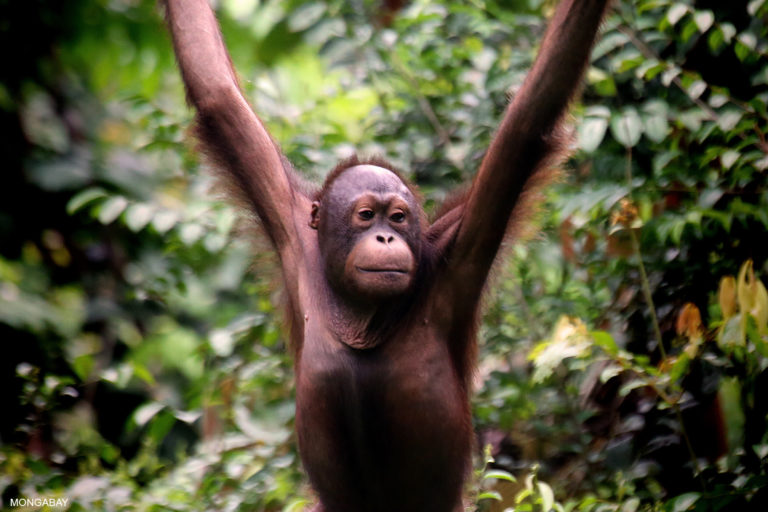
Sabah’s legal framework
Sabah has had laws on the books to protect forests since shortly after it joined Malaysia, beginning with its 1968 Forest Enactment Law, which set out to demarcate land both for business and conservation, establishing the categories of forests still used today.
In the text, the state defines seven levels of forest reserve, ranging from untouchable protected areas to forests open for commercial use, as well as the requirements for managing them and punishing violators. Sabah’s forestry law also creates a fund to cover costs of reforestation and preparing management plans, but the fund relies on government grants, and fines imposed on those who remove “forest produce” from reserve and state land.
Indigenous lands are also nominally protected under the Forest Enactment Law, which reserves their rights to land for homes and communal spaces, as well as their rights to logging for domestic consumption. But to gain any claim, Indigenous groups need to follow a lengthy land titling process or risk having their land confiscated.
The law further requires environmental impact assessments (EIAs) for logging and agriculture projects spanning more than 500 hectares (1,240 acres), in addition to mining, power generation and other developments. According to the law, a consulting company hired by a developer is required to assess community impacts during the assessment, and hold a public hearing for larger, more environmentally sensitive projects.
The major problems with this law arise with enforcement, civil society members have said, as there is little space for public participation, and both companies and government have proved reluctant to post information for communities to understand a project’s scope.

Rahimatsah Amat, CEO and founder of the conservation organization Sabah Environmental Trust, says the EIA process has a giant loophole that allows companies to influence assessments. He points to Article 12c that he says was “quietly introduced” into the government’s EIA law.
Before, Rahimatsah says, environmental impact assessments were evaluated by a panel that had to reach conclusions as a majority; the new policy put final decision-making authority in the hands of the chair of the committee. And under the existing law, the company proposing a development has the right to select that chairperson.
“When they add section 12c, irrespective of what committee said, the chair is one person who can make the decision,” Rahimatsah says.
He adds that, in practice, EIAs generally only propose partial mitigation measures, rather than stopping or curtailing projects that could have severe environmental or social impacts.

A nod to sustainable forestry
In the 1990s, the Sabah Forestry Department fell under greater pressure to protect its remaining forests. One of its responses was to pilot a sustainable-use plantation for timber production at the 55,000-hectare (136,000-acre) Deramakot Forest Reserve, an area that had been licensed for logging from 1955 to 1989. With help from the German government’s development corporation, GTZ (now GIZ), the Sabah state government developed a plan to sustainably manage the forest. Under the plan, some portions of the forest were allocated for limited commercial logging of high-value timber, while others were reserved for community forestry and conservation.
This pilot project eventually evolved into the Forest Management Unit (FMU) program, which allows concessionaires in partially degraded forest areas to develop part of their concession for agricultural uses, while reforesting and protecting the rest.
Rahimatsah says the FMU program has been somewhat successful at preserving areas, providing some incentive for corporations to preserve a portion of the forest areas they are granted. “Of course there are some mischievous contractors, but those who sign the long-term agreements are mostly doing a very good job,” he says. “Because they sign for 100 years, they’re committed.”
However, he says, concessionaires have struggled to profit off degraded forest, leaving them with little to reinvest in preservation; most of these areas have little timber, and the land is without topsoil and therefore needs to be enriched to grow plants, a process that is both lengthy and expensive.
By 2018, at least four of the 37 FMU concessions granted since 1997 had been cancelled due to noncompliance, and Sabah Chief Conservator of Forests Mashor Mohd Jaini said only 75% of the remaining concessions met “minimum standards.” Jaini also announced that future concessions would only be granted to the quasi-governmental Sabah Foundation (Yayasan Sabah), which already managed more than 240,000 hectares (593,000 acres) of FMU area.
Due to the special nature of the Sabah Foundation’s relationship with the state and the specifics of its FMU contract, Rahimatsah says concessions managed by the foundation are not strictly controlled by the state’s sustainable forest management terms, which could lead to oversight or exploitation.
In its latest forestry policy in 2018, the government set a goal of maintaining 50% of the state under some degree of forest cover. Sabah’s chief conservator of forests said the state had about 48% forest cover left. However, as is generally the case in Malaysia, this figure includes all forest classifications, including commercial-use “Class II” forest reserves, which are simply plantations.
Still, satellite data from Global Forest Watch offer some evidence that the state government is working to reduce deforestation, though progress is still slow: Total forest loss hovered at about 90,000 hectares (222,400 acres) annually between 2017 and 2019, while the amount of annual primary forest cover loss tapered from 17,700 hectares to 10,900 hectares (43,700 to 26,900 acres) in the same period.

The Forest Stewardship Council (FSC), an international nonprofit that promotes sustainable forest management, also says it has had success in Sabah, where close to 80% of forest area is certified by the board, compared to 30% in Malaysia as a whole.
Nationwide, the Malaysia Palm Oil Certification Council (MPOCC) has its own sustainable industry program, which was given more weight after the federal government required industry players to obtain Malaysia Sustainable Palm Oil (MSPO) certification from the start of 2020. Progress has been slower with smallholders, who have a 2021 deadline for certification.
Several NGOs say certification programs don’t reach the root of the problem in Borneo forests, condoning unsustainable practices and ignoring larger corruption issues in forest management.
Straumann points, in particular, to problems with gaining the consent of Indigenous communities, saying few community members are consulted, and often under pressure. He cites projects such as the 148,305-hectare (366,470-acre) Samling timber concession in Sarawak, which was approved under the Malaysia Timber Certification Scheme but faced criticism after Kenyah and Penan Indigenous communities protested a lack of proper consultation.
“This [consultation process] is not a proper procedure. A proper procedure would involve community consultation at multiple levels, and we know these communities have [written] protest letters,” Straumann says. “They don’t want the forest to be logged, and especially they don’t want the timber from their forests to be sold as sustainable timber.”
In response to questions from Mongabay, Vathani Panirchellvum, the communications director for the palm oil council, says the association is “open to constructive engagement” from civil society.
She also says Sabah, along with Sarawak, has “clearly proven” successful at certifying plantations, as they were the two states with the greatest certified areas.
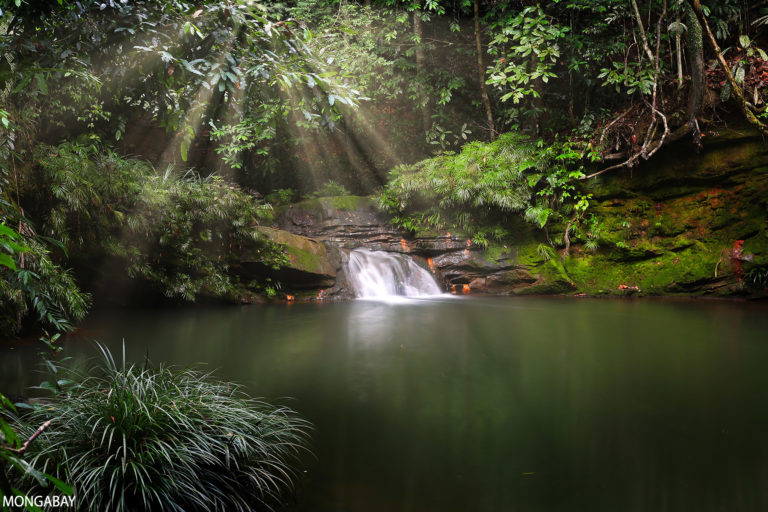
Sarawak’s legal framework
Sarawak’s Forest Ordinance is similar to Sabah’s law in that it sets out categories of forest management, including commercial forests. The latest edition, passed in 2015, is meant to increase punishments for illegal logging, forest encroachment and other offenses, as well as empower officials to enforce the law and investigate crimes. But finding the resources and will to implement the law is still a challenge in Sarawak.
In principle, forested areas belong to the state. In practice, though, Sarawak’s forestry laws grant both officials and concession holders great flexibility set their own terms.
For example, while Sabah’s FMUs have set term limits, the duration of licenses to manage commercial forests in Sarawak is determined on a case-by-case basis. Production limits and restrictions on sales are likewise left to be worked out between officials and concession holders.
Civil society groups say these flexible guidelines allow room for exploitation and secrecy, allowing patronage systems to dominate the timber and oil palm industries.
After more than a decade of criticism of forest destruction, and multiple allegations of collusion between the timber industry and the Sarawak government, officials in 2019 began promising to review the environmental law to better balance the country’s forestry industries as well as communities.
The state legislature passed an amendment to Sarawak’s Natural Resources and Environment Ordinance in November 2019, calling for stricter enforcement against violations — echoing calls to reform the Environmental Quality Act that broadly governs environmental issues in Peninsular Malaysia.
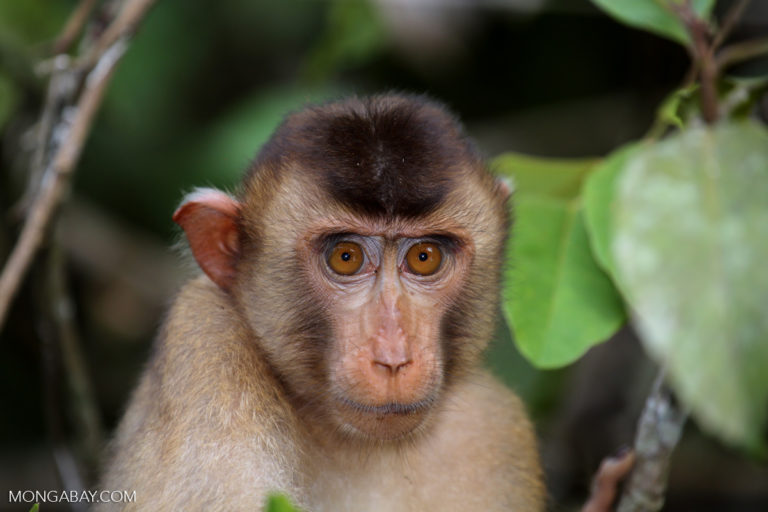
But while promoting the amendments, environment officials and Chief Minister Abang Johari Tun Openg were using it as a chance to reaffirm the state’s sovereignty and emphasize that the federal government has no say over local environmental issues.
“In Sarawak, we have the power so we can plan our strategic approach on environmental management on our own. Only we know what we want,” Johari said in December 2019.
As a result, the Sarawak government began restructuring its forestry oversight bodies in early 2020. As part of that, the Sarawak Forestry Corporation (SFC), created by the state in 1995 as a private company and given control over much of the state’s sustainable forestry efforts, became a statutory body and assumed management of totally protected areas (TPAs). With this status change, the SFC essentially assumed the role of the Sarawak Forestry Department, previously the sole state government entity handling forest issues.
Zolkipli Mohamad Aton, SFC’s CEO, said in an emailed statement that the government changed the organization’s status to allow it to enforce laws related to protection of wildlife, national parks and natural resources, enabling SFC to be “focused and strategic” in forest protection.
But watchdog news outlets, namely Sarawak Report, have long alleged that rather than the law itself, the issues revolve around politicians granting their own companies forest concessions or taking kickbacks from companies that were granted concessions, including the company behind the plantations near Gunung Mulu National Park.
Straumann and his organization, Bruno Manser Fonds, are still in a lawsuit in Swiss courts over their allegations that the family wealth of former Sarawak chief minister Abdul Taib Mahmud is connected to corruption in the forestry industry. Though the case has continued for more than a year, Straumann says Jamilah Taib Murray, the former leader’s daughter, who filed the suit, has yet to explain the source of their wealth.
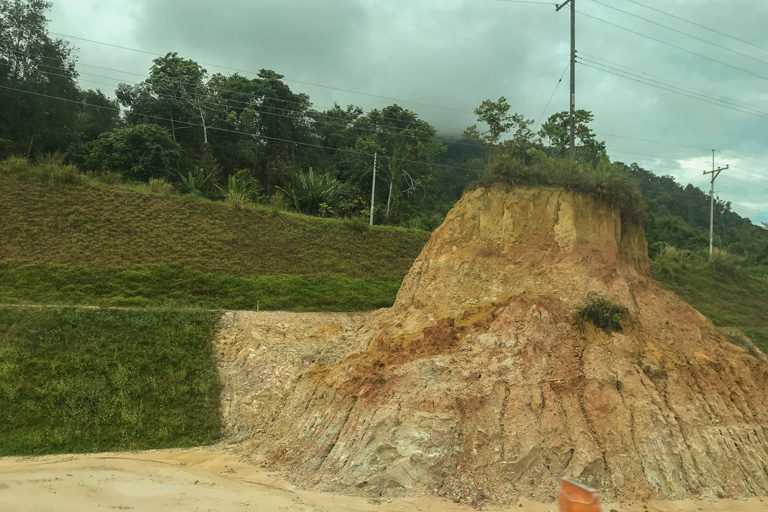
Continuing challenges
There are still lasting concerns whether either states’ response will be sufficient to maintain forest levels, observers say.
Zolkipli, the Sarawak Forestry Corporation leader, says that even TPAs are threatened by new developments, particularly infrastructure and local and commercial plantations.
“[W]hat is most apparent is the increased in accessibility into the TPAs, such as road alignment passing through the TPAs or cultivation of areas by locals or commercial plantation adjacent to TPAs. This will obvious[ly] pose as high risks to those parks,” he says in an email.
Conservation advocates in both states say that real transformation requires state governments to do more to enforce existing laws and operate transparently.
Rahimatsah, the Sabah-based conservationist, says the country’s economy is in flux, especially after the pandemic put a freeze on tourism, and market-based conservation initiatives like FMUs are dependent on broader economic trends. Noting the competition from Vietnam and other countries that source and produce furniture, some FMU holders are considering a switch from timber to agriculture plantations, especially luxury fruits like durian.
But the fruit plantations are struggling, especially durian plantations, as the rich fruit’s consumption has fallen with a total freeze on international flights due to COVID-19.
“Tourists are not coming, at least [the] domestic market will still eat durian, but how much durian can we eat?” Rahimatsah says. A better approach, he suggests, would be for the state to support a high-quality, sustainable timber industry.
Straumann says he saw genuine political will to preserve Sarawak forests under former chief minister Adenan Satem’s government, including a halt on new logging concessions.
However, Straumann says some of these efforts came too late to make a real difference in forest protection: Nearly all of the state’s forests have already been parceled out as concessions, leaving little room for the timber industry to expand. “Apart from the totally protected areas, there’s no untouched forests left,” Straumann says.
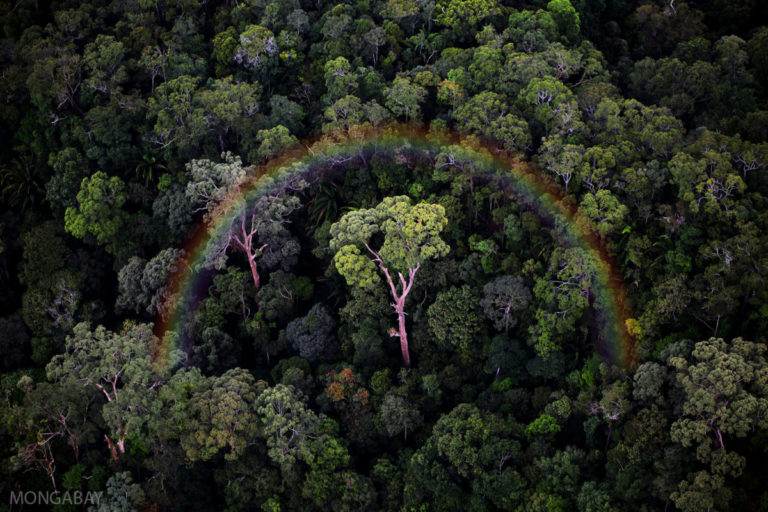
FEEDBACK: Use this form to send a message to the author of this post. If you want to post a public comment, you can do that at the bottom of the page.